- Submissions

Full Text
Archaeology & Anthropology:Open Access
Petrogeochemistry of Gneissic Rocks Exposed Around Arjungarh, District Rajsamand, Rajasthan, India
Sorokhaibam Kavita Devi1* and Harel Thomas2
1 Department of Geology, Mizoram University, India
2 Department of Applied Geology, Doctor Harisingh Gour Vishwavidhyalaya, India
*Corresponding author: Sorokhaibam Kavita Devi, Department of Geology, Mizoram University, Aizawl, Mizoram, India
Submission: July 02, 2018;Published: October 05, 201858

ISSN: 2577-1949 Volume3 Issue3
Abstract
Gneissic rocks exposed in and around the Arjungarh of Central Rajasthan exhibits various geological signatures that attract many geologist and researchers for detail investigation. The present paper focused on the petrography and geochemistry of gneiss rocks of Arjungarh, Rajsamand. As in other areas of the BGC, gneiss was the main rock exposure found in the reported area. They were coarse-grained, light colored rock exhibiting well augen gneissic characteristics. The rock is mainly composed of quartz, feldspar, hornblende, biotite, and other opaque minerals. The rock was alumina rich and also high in potash content. There was also a pronounced negative Eu anomaly which suggests both K-feldspar and plagioclase were not removed in the differentiation sequence. Based on the geochemical analyses and interpretation, augen gneiss was found to be originated from granite to granodioritic igneous parentage of calc-alkaline composition in the tectonic setting of within plate granite.
Keywords: Arjungarh; Augen gneiss; BGC; Geochemistry; Gneissic rock; Petrography; Petrogenesis
Introduction
The study area lies in the Toposheet No. 45K/2 between longitude east 74˚05’00” to 74˚09’00” and latitude north 25˚38’20’’ to 25˚40’40’’ (Figure 1). The rocks exposed in and around the Arjungarh area are Banded Gneissic Complex (BGC) which occupies a large tract of the Central Mewar (Udaipur and part of Bhilwara). Gupta [1] has grouped the rocks of Arjungarh, as Paragneiss Complex, with the Aravalli System and are referred to as basement rock-suite. The BGC cratonic region is dominantly gneissic to migmatitic with amphibolites and metasediments of amphibolites/ granulite facies intruded by late Archean granites (Untala, Gingla, Berach etc) and rare ultramafics. Among the gneissic rocks, grey coloured biotite gneisses are dominant with leucocratic bands as a result of which the name Banded Gneissic Complex is appropriately given by Gupta [1] and Heron [2]. Hackett [3] described the geology of the Aravalli Mountain Belt and the adjoining area in the north western part of the Indian Peninsular Shield in western India. Gupta [1] and Heron [2] systematically surveyed the area and gave the basic geological information. Gupta et al., [4], has grouped the Sandmata complex under Bhilwara Supergroup which is equivalent to the oldest stratigraphic unit, the Banded Gneissic Complex of Heron [2,5]. These basement rocks are having polymetamorphic nature and are characterized by amphibolites to granulite facies grade of metamorphism in association with mafic and felsic orthogneisses, and meta-sedimentary rocks [6-16]. The granitic plutons from the BGC were dated at 2.9Ga by Rb/Sr isotopic systematics [17]. The tonalitic grey gneiss from east of Udaipur yielded age of 3.3Ga [18]. And single Zircon grains gave 3.23-2.89Ga by evaporation method (207Pb/206Pb) for these gneisses [19] . The 3.3Ga old gneisses of the BGC simply represent a nucleus of the Rajasthan craton. However some BGC rocks as at Sarara, are not Archean in age and their disturbed dates gave scattered ages (Proterozoic) but these BGC rocks are definitely overlain by the Palaeoproterozoic Aravalli Supergroup, with an erosional unconformity between them [20]. From this similar occurrence of BGC inliers we cannot consider only the isotopic ages but also to consider the geological setting of the rocks [21]. The BGC is generally thought to be an Archean basement terrain that was partially reworked during the Paleoproterozoic. Laser Ablation ICP-MS zircon U-Pb study of felsic orthogneissses and metapelites reveals that the metasediments in the Sandmata Complex have Proterozoic, rather than mid-Archaean protoliths [22].
Field Occurrences
The gneissic rocks cover more than two third of the study area (Figure 2a) and in fact constitute the BGC in the Rajasthan. The gneissic rocks on the way from Dhapra to Khirniya village become banded with dark streaks of biotite-sillimanite in the quartzofeldspathic matrix. The presence of garnet gives red to reddish brown patchy appearance to the rock near Khirniya village. There are several pegmatitic and granitic veins in those rocks mainly near Khirniya village and on the way from Thana to Dhapra village. In the paragneiss small lensoid bodies containing enderbite and also metanorite are found. In Khirniya village, the migmatites are intruded by quartz veins which show both concordant as well as discordant relationships. Migmatite are usually banded gneisses formed when the schist and the augen gneisses alternate on the scale of centimeter to meter [23] as seen in the village Khirniya. These rocks may grade into schists or augen gneisses at places. On the way towards Bateri, two generations of folding are present in migmatite.
Petrography
Figure 1:Geological map around Arjungarh, District Rajasamand, Rajasthan.
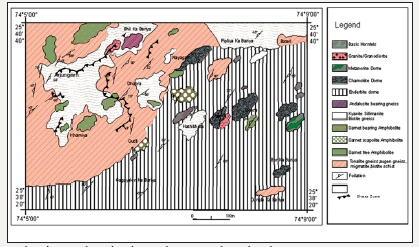
Figure 2:Showing the panoramic view of Arjungarh, Rajasthan.
Figure 2b: Biotite Laths oriented along a preferred direction and K-feldspar -plagioclase intergrowth showing exsolution.
Figure 2c: Granules of plagioclase ,K-feldspar and quartz, myrmekitic texture shown by intergrowth of quartz adjacent to plagioclase.
Figure 2d: Quartz, K-feldspar, plagioclase granules showing mortar texture. Epidote surround the granules are formed by reaction:
Plagioclase+H2O=Epidote.
Figure 2e: Laths of biotite and secondary muscovite oriented in a preferred orientation in granules of K-feldspar and plagioclase.
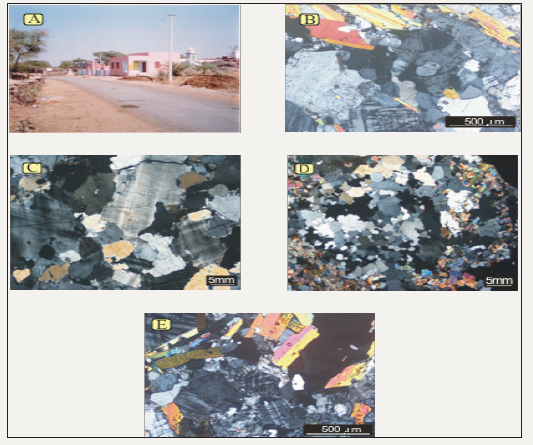
Hand specimen and thin section studies of the selected rocks samples had been carried out with special attention to orientation pattern and grain contact relationships of minerals in the rock assemblages. Grain contact study of the mineral are of special significance in illustrating problem of equilibrium [7,9,11-14, 24-30]. In the investigated area they are medium to coarse grained, light grey to dark colour, composed mostly of quartz, feldspar and biotite with or without minor hornblende (Figure 2b). Besides these epidote, garnet, apatite, secondary muscovite may also occur all varying in amounts, that give rise to schistose and gneissic/migmatites (Figure 2c). In some places K-feldspar and plagioclase porphyroblast may give rise to “augen structure”. Muscovite occurs only in the hornblende - free gneiss and sometimes in the augen gneiss.
The following mineral assemblages were observed from the area:
1. Plagioclase-muscovite- k-feldspar-quartz (Sample No.K16).
2. Biotite-plagioclase-quartz-K-feldspar-Al-silicate (Sample No. K5).
3. Biotite-quartz-K-feldspar-plagioclase (Sample No. K20).
4. Plagioclase-muscovite-k-feldspar- biotite-quartz (Sample No K18).
5. Plagioclase-quartz-k-feldspar-biotite (Sample No K20).
6. K-feldspar-biotite- plagioclase-garnet-kyanite (Sample No12).
7. K-feldspar-garnet-quartz ( Sample NoK13).
Gneisses show granoblastic mosaic texture and K-feldspar and occasionally plagioclase and quartz shows porphyroclastic texture. Foliation and compositional layering is conspicuous. In augen gneiss plagioclase crystals are sub-idioblastic and define porphyroblastic texture. Sub-idioblastic laths of biotite are oriented in a preferred orientation. In migmatitic varieties, plagioclase in the schistose portion occur as small prisms and are equant with a dimensional orientation, biotite sometimes interleaved with muscovite. Quartz, microcline, and plagioclase also show mortar structure. Quartz intergrowth with the adjacent plagioclase gives myrmekite texture (Figure 2d). Some, samples shows perthitic texture, as well as graphic texture. Accessory minerals like chlorite, magnetite, rutile and apatite are seldom encountered. Muscovite present probably represents a re-crystallized product after metamorphism. Large plagioclase crystals with bent or faulted lamellae and sometimes even marginal granulation are evident of post crystalline deformation . The microcline, quartz and plagioclase showing mosaic structure seems to have re-crystallized simultaneously (Figure 2e).
Geochemistry and Petrogenesis
Geochemical data on major and trace elements were used to find out the precursor of these rocks. The major oxides (SiO2, TiO2, Al2O3, CaO, Fe2O3, MgO, MnO, Na2O, K2O and P2O5) and trace elements were determined by using SIEMENS SRS 3000 sequential X-ray Fluorescence Spectrometer (XRF) at Wadia Institute of Himalayan Geology, Dehradun. Calculated values for major oxides for four selected gneiss assemblages are presented in the Table 1. The compositional ranges for major elements are displayed in Harker variation diagrams (Figure 3). The SiO2 contents of gneiss ranges from 46.67% to 75.38 % averaging at 64.74%. With increasing SiO2 content FeOt and MgO decreases markedly from 16.39 to 0.73% and 6.07 to 0.28% respectively. The Al2O3 content ranges from 11.99 to 22.41%. The K2O varies from 3.6 to 7.0 % and averages at 5.80% while Na2O ranges from 0.35 to 3.32% with an average of 1.88%. The CaO content ranges from 0.36 to2.78% averaging at 1.39%. The variation diagram from the trace element data of the selected four are given in Figure 4.
Table 1:Calculated values and CIPW norms from the major oxides of gneissic rocks from Arjungarh area, District Rajsamand, Rajasthan.
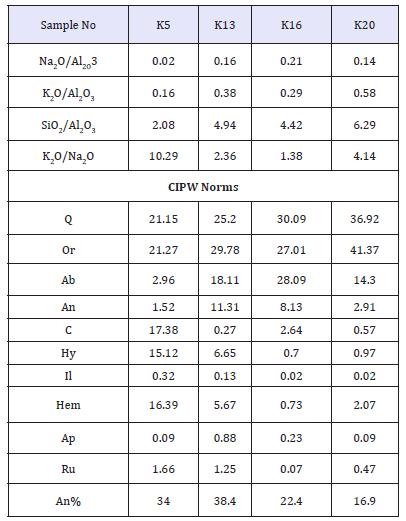
The system anorthite (An)-albite (Ab)-orthoclase (Or) showing the field of different granitic composition, (Figure 5) all the selected four samples falls in the field of granodiorite to granite field [31]. The discrimination plot between Y+Nb and Rb [32] (Figure 6) shows that one sample falls at WPG and two samples at Volcanic Arc Granite and another sample falls under syn-collisional granite. The discrimination plot between Y versus Nb (Figure 7); [32] also shows three of the sample fall under syn-collisional granite and Volcanic Arc Granite and one sample falls under Within Plate Granite.
Figure 3:Harker diagram for four samples selected of gneiss of Arjungarh and nearby area, District Rajsamand, Rajasthan.
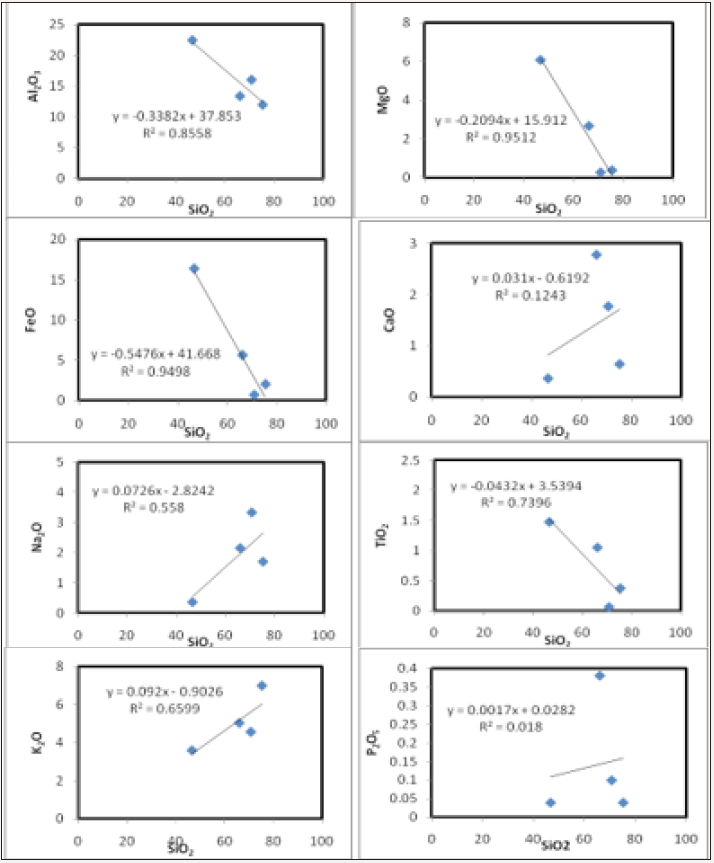
Conclusion
On the basis of above field observation and analysis, it is clear that the gneiss of the study area are the most dominant rock type cover more than two third of the study area. These rocks may grade into augen gneisses or migmatite at places and their parent rock is granite to granodioritic in nature. They may be the product of partial melting of oceanic crust during subduction which is supported by the discrimination diagram of Y versus Nb as well as the discrimination diagram of Y+Nb versus Rb. These indicate progressive partial melting and fractional crystallization of the parent rock.
Figure 4:Variation diagram of four selected samples of gneiss of Arjungarh and nearby area, District Rajsamand, Rajasthan.
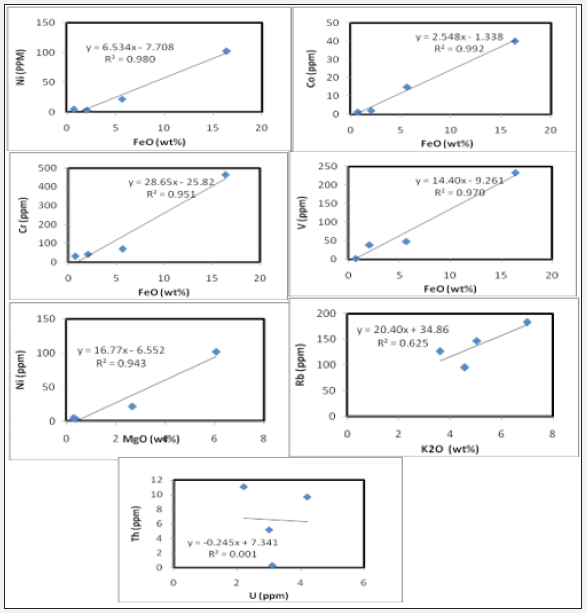
Figure 5:The system anorthite (An)-albite (Ab)-orthoclase (Or) showing the field of different granitic composition of the selected four samples of gneiss from Arjungarh area, District Rajsamand, Rajasthan [31].
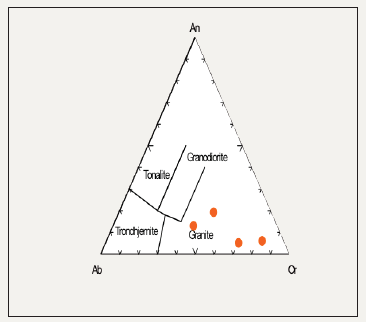
Figure 6:The discrimination plot between Y+Nb and Rb of the selected four samples of gneiss from Arjungarh area, District Rajsamand, Rajasthan [32].
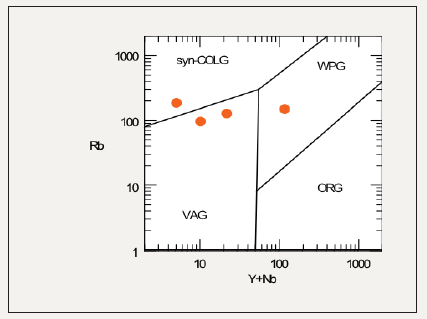
Figure 7:The discrimination plot between Y versus Nb of the selected four samples of gneiss from Arjungarh area, District Rajsamand, Rajasthan [32].
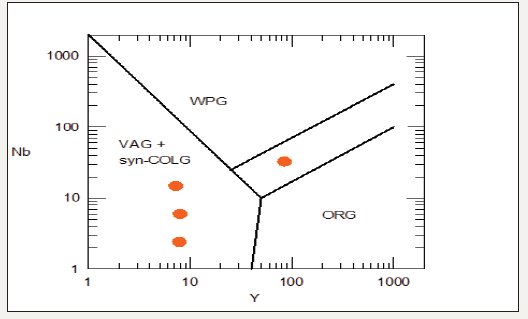
Acknowledgement
The author (Kavita S) is thanks to Head, Department of Geology, Mizoram University, for providing facilities to carry out this work.
References
- Gupta BC (1934) The geology of central Mewar. Mem Geol Surv India 65: 2.
- Heron AM (1953) The Geology of Central Rajputana. Mem. Geol Surv India, p. 72.
- Hacket CA (1977) Aravalli series in northeastern Rajputna. Rec Geol Surv Ind 10(2).
- Gupta SN, Arora YK, Mathur RK, Iqballuddin Prasad B, Sahai TN, et al. (1980) Lithostratigraphic map of Aravalli region (11000,000). Geol Surv India, Calcutta, India.
- Heron AM (1935) Synopsis of the pre-vindhyan geology of Rajputana. Trans Nat Inst Sci India 1(2).
- Joshi M, Thomas H, Sharma RS (1993) Granulite facies metamorphism in the Archaean gneiss complex from North–Central Rajasthan. Proc Nat Acad Sci India 63: 167-187.
- Sharma RS, Narayan V (1975) Petrology of polymetamorphic schists from an Archaean complex terrain, southeast of Beawar, Rajasthan, India. Neus Jb Mineral Abh 124: 190-222.
- Thomas H (1991) Petrographic study and petrogenesis of the precambrian rocks around Thana, District Bhilwara, Rajasthan. Unpublished Ph D thesis, Banaras Hindu University, India.
- Thomas H (1995) Pressure Temperature considerations for granulite from Thana Gyangarh, District-Bhilwara, Rajasthan Implication for crustal evolution. In: Srivastava RK, Chandra R (Eds.), Magmatism in relation to Divers Tectonic Setting. Oxford & IBH Publishing Com Pvt Ltd, pp. 439-456.
- Thomas H (1996) P-T constraints on granulite facies metamorphism in the Archaean gneiss complex of Thana-Gyangarh, North central Rajasthan, India. In International symposium in Charnockite and granulite facies rock at Madras, India, p. 41.
- Thomas H (2005) Polymetamorphism in the Archaean Gneiss Complex of Shivpura Gyangarh, District Bhilwara, Rajasthan. In: Thomas H (Ed.), Granulite facies metamorphism and Crustal Evolution, Atlantic publishers & Distributors, New Delhi, India, pp. 120-146.
- Thomas H, Sujata S (2008) Petrology and Reaction texture of the Metanorites from Shivpura, District Bhilwara, Rajasthan. In: Srivastava RK, Sivaji C, Chalapathi Rao NV (Eds.), Indian Dykes Geochemistry, Geophysics and Geochronology. Narosa Publishing House Pvt. Ltd., New Delhi, India, pp. 571-587.
- Thomas H, Vishwakarma N (2011) Geochemical Characters of Amphibolites from Asind District Bhilwara, Rajasthan, India. Asian Journal of Chemistry 25(12): 5433-5440.
- Thomas H, Vishwakarma N (2011) Petrochemical studies of amphibolites from Kirimal district Bhilwara, Rajasthan, India. Memoir of the Geological Society of India 77: 559-571.
- Thomas H, Vishwakarma N (2011) Petrochemical studies of Metanorite from Asind, District-Bhilwara, Rajasthan, India. In: Singh VK, Ram C (Eds.), Proceeding of the 2nd International Conference, Precambrian Continental Growth and Tectonism, Angel Publication, New Delhi, India, pp. 85-94.
- Thomas H, Lalu P (2015) Petrogeochemistry of Amphibolites from Shivpura, District Bhilwara, Rajasthan, India. Journal of Institute of Science & Technology Tribhuvan University, India, 20(2): 103-112.
- Chaudhary AL, Gopalan K, Sastry CA (1984) Present status of geochronology of the Precambrian rocks of Rajasthan. Tectonophysics 105(1-4): 131-140.
- Gopalan K, MacDougall JD, Roy AB, Murali AB (1990) Sm-Nd evidence for 3.3Ga old rocks in Rajasthan, North Western India. Precambrian Research 48(3): 287-297.
- Roy AB, Kr¨oner A (1996) Single zircon evaporation ages contraining the growth of the Archaean Aravalli craton, northwestern Indian shield. Geol Magn 133(3): 333-342.
- Poddar BC (1965) Stratigraphic position of the Banded Gneissic complex of Rajasthan. Curr Sci 34: 483-484
- Naha K, Mohanty S (1990) Structural studies in the pre-Vindhyan rocks of Rajasthan a summary of work of the last three decades. Proc Indian Acad Sci 99(2): 279-290
- Buick IS, Allen C, Pandit M, Rubatto D, Hermannb J (2006) The Proterozoic magmatic and metamorphic history of the Banded Gneiss Complex, central Rajasthan, India LA-ICP-MS ,U-Pb zircon constraints. Precambrian Research 151(1-2): 119-142.
- Dietrich RV, Mehnert KR (1960) Proposal for nomenclature of migmatites and associated rocks. Rep Int Geol Congr 21(26): 56-67.
- Blackburn WH (1968) The spatial extent of chemical equilibria in some high grade metamorphic rocks from the Greenville of Southeastern Ontario. Contr Mineral Petrol 19: 72-92.
- Naggar MH, Atherton MP (1970) The composition and metamorphic history of some aluminium-silicate bearing rocks from the aureoles of Dongal granites. Jour Petrol 11(3): 549-589.
- Phinney WC (1963) Phase equilibria in the metamorphic rocks of the St. Paul Island and cape North, Nova Scotia. Journal of Petrology 4(1): 90-130.
- Robinson P, Jaffe HW (1969) Aluminous enclaves in gedrite cordierite gneiss from southwestern New Hampshire. American Journal of Science 267(3): 389-481.
- Zwart HJ (1962) On the determination of polymetamorphic mineral association and its application to the Bosost area (Central Pyrenees). Geol Rundsch 52: 38-65.
- Lalnunmawia J, Kumar S, Thomas H (2011) Petrochemistry of leptynite of the Chotanagpur granite gneiss complex (CGGC) in the north-east of Dumka town, Jharkhand. Memoir of the Geological Society of India 77: 573-590.
- Vishwakarma N, Thomas H (2015) Petrological and geochemical characteristics of charnockite from Asind, District-Bhilwara Rajasthan Implication for its origin. Journal of Applied Geochemistry 17(1): 10-21.
- Barkar F (1979) In Trondhjemites, dacite and related rocks, Elsevier, Amsterdam, Netherlands, pp. 1-12.
- Pearce JA, Harris NBW, Tindle AG (1984) Trace element discrimination diagrams for the tectonic interpretation of granitic rocks. Jour Petrol 25: 956-983.
© 2018 Sorokhaibam Kavita Devi. This is an open access article distributed under the terms of the Creative Commons Attribution License , which permits unrestricted use, distribution, and build upon your work non-commercially.
 a Creative Commons Attribution 4.0 International License. Based on a work at www.crimsonpublishers.com.
Best viewed in
a Creative Commons Attribution 4.0 International License. Based on a work at www.crimsonpublishers.com.
Best viewed in 







.jpg)






























 Editorial Board Registrations
Editorial Board Registrations Submit your Article
Submit your Article Refer a Friend
Refer a Friend Advertise With Us
Advertise With Us
.jpg)






.jpg)














.bmp)
.jpg)
.png)
.jpg)










.jpg)






.png)

.png)



.png)






